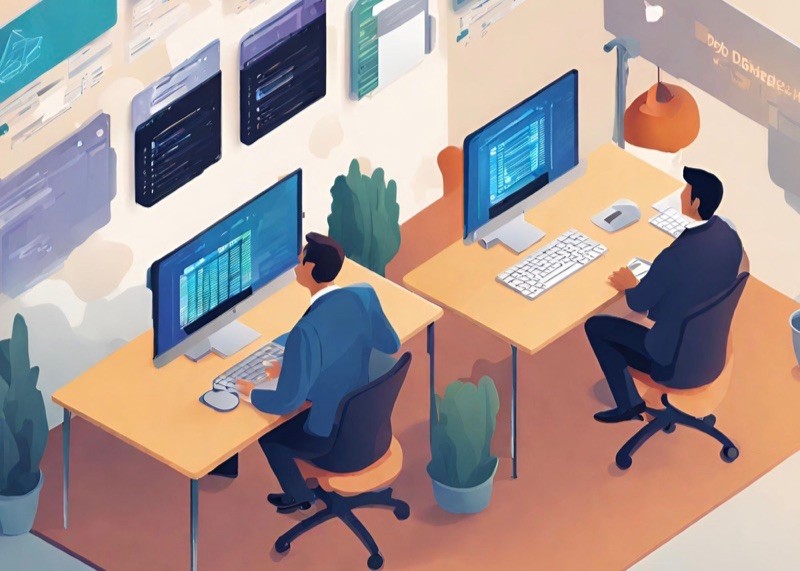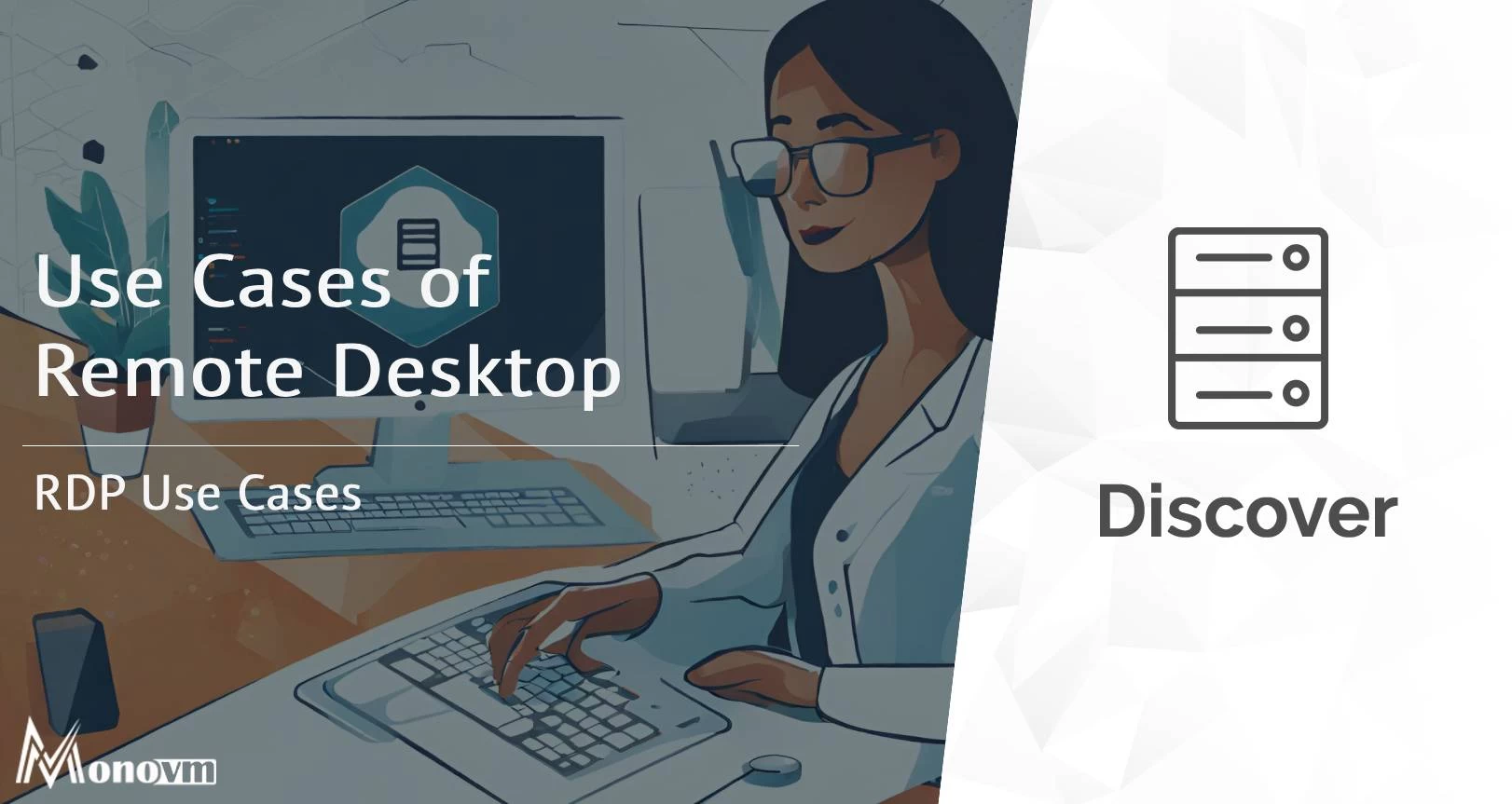List of content you will read in this article:
Remote Desktop Protocol (RDP) stands as a pillar of modern connectivity, offering a wealth of possibilities for remote access and management. This guide explores the versatile world of RDP, unveiling the diverse RDP use cases and shedding light on the advantages it brings to the forefront. From troubleshooting and remote desktop access to efficient server administration, RDP is a conduit for enhanced productivity and seamless connectivity. Join us on this journey as we uncover the multitude of ways RDP transforms the way we interact with our digital environments.
Understanding RDP Meaning: What Is Remote Desktop Protocol?
Before we dive into RDP use cases, let's clarify what RDP is and how you use it. RDP is a network communications protocol developed by Microsoft. It acts as a secure gateway for users to remotely access and control their physical work desktop computers or servers over a network.
RDP employs a graphical user interface (GUI), allowing remote users to interact with their remote desktop as if they were physically present at the machine. This powerful technology opens up a world of possibilities, making it an invaluable tool for various purposes.
Use Cases of Remote Desktop Services 2024
Remote Desktop Protocol (RDP) serves a multitude of purposes in today's digital landscape. The primary RDP use cases include remote troubleshooting, enabling support technicians and IT professionals to diagnose and repair systems from a distance. Remote desktop access allows users to connect to their work or home computers from anywhere, ensuring flexibility and productivity. Lastly, RDP is essential for remote administration, enabling IT administrators to configure, update, and manage servers and systems remotely. These RDP use cases underscore the versatility of RDP in facilitating efficient remote access and support across various scenarios, from corporate environments to remote work settings.
1. Remote Troubleshooting
One of the best RDP use cases is remote troubleshooting. Whether you're part of a corporate help desk or simply helping a friend or family member with their computer issues, RDP lets you diagnose and resolve problems from a distance. This can save time, reduce travel costs, and provide more efficient support.
2. Remote Desktop Access
RDP offers users the ability to access their home or office computers while traveling or working from home. This example of RDP use cases is especially relevant in today's increasingly remote work landscape. Employees can access their work environment seamlessly, ensuring continuity in their tasks.
3. Remote Administration
For IT administrators, RDP is an invaluable tool for managing and maintaining network servers. It allows administrators to make configuration changes, perform updates, and troubleshoot issues on servers without the need for physical access. This type of RDP use case simplifies server management and reduces downtime.

Why Use RDP?
The adoption of Remote Desktop Protocol (RDP) offers a host of compelling advantages, making it an indispensable technology in today's interconnected world. Here, we delve into the key benefits of using RDP and why we use RDP as the go-to solution for remote access and management.
1. Enhanced Productivity
RDP stands as a beacon of enhanced productivity. By granting users the ability to access their desktop environments from virtually anywhere with an internet connection, it liberates them from the confines of a physical workspace. This newfound flexibility empowers professionals to perform tasks, access critical resources, and collaborate effectively, irrespective of their geographical location. The result is heightened productivity and an agile work culture that adapts seamlessly to evolving demands.
2. Resource Accessibility
One of the most powerful attributes of RDP use cases lies in its ability to ensure resource accessibility. Users can reach their files, applications, and data repositories from afar, eradicating the limitations posed by physical proximity to their primary workstations. This feature proves indispensable for professionals who must remain productive while on the move or engage in collaborative efforts across remote teams. RDP bridges the gap between distance and productivity.
3. Cost Savings
In a world where every penny counts, RDP emerges as a cost-saving marvel. By reducing the need for physical travel, organizations can realize substantial savings in terms of travel expenses. Moreover, downtime associated with on-site visits is minimized as RDP enables efficient troubleshooting and management from a distance. This strategic utilization of resources translates into more streamlined operations and optimized budget allocations.
4. Streamlined IT Management
For IT administrators and support teams, RDP simplifies the complex landscape of server and desktop management. The ability to configure, update, and maintain systems remotely translates into reduced on-site visits, minimized disruptions to the workforce, and heightened efficiency. IT professionals can perform tasks swiftly and effectively, all while mitigating the challenges posed by physical distance.
How to Use RDP with Multiple Monitors?
At this point, you might ask can RDP use multiple monitors? Remote Desktop Protocol (RDP) provides a seamless way to extend your digital workspace across multiple monitors, enhancing your productivity and workflow. Here's a step-by-step guide on how to use RDP with multiple monitors:
- Prepare Your Host: Ensure your remote computer has multiple monitors set up.
- Open RDP Client: Launch the RDP client on your local computer.
- Connect: Enter the remote computer's IP or hostname and click "Connect."
- Customize Display: In advanced settings, go to the "Display" tab.
- Select Multi-Monitor: Choose "Use all my monitors for the remote session."
- Adjust Settings: Customize other preferences if needed.
- Connect: Click "Connect" to span your remote session across all local monitors.
Now, you can work seamlessly across multiple screens during your remote session, enhancing productivity and workflow.
Secure RDP Usage: Best Practices
For a secure and productive Remote Desktop Protocol (RDP) experience, follow these best practices:
- Strong Authentication: Require strong passwords or multifactor authentication (MFA) for RDP access.
- Access Control: Limit RDP access to authorized users and avoid default administrator accounts.
- Network-Level Authentication (NLA): Enable NLA to enhance security by requiring authentication before connecting.
- Encryption: Use strong encryption (set to "High") for RDP data transmission to protect sensitive information.
- Rename Default Administrator Accounts: Make them less predictable targets for attackers by renaming default admin accounts.
- Disable Clipboard and Printer Redirection: Prevent data leakage and driver-based attacks by disabling these features.
- Session Management: Control the number of simultaneous RDP sessions per user to prevent abuse.
- Regular Updates: Stay current with security updates and patches to mitigate vulnerabilities.
- Monitor Activity: Use logs and auditing tools to monitor RDP activity for suspicious behavior.
- Avoid Internet Exposure: Never expose RDP directly to the internet; use a VPN for secure remote access.
Conclusion
Remote Desktop Protocol (RDP) serves as a versatile tool with a multitude of use cases, ranging from troubleshooting and remote access to efficient server administration. Its flexibility and accessibility make it an invaluable resource for individuals and organizations seeking to enhance productivity and streamline their workflows. However, it is crucial to prioritize security by implementing best practices and staying vigilant against potential vulnerabilities, ensuring that the benefits of RDP are fully realized while minimizing risks.


Hello, everyone, my name is Lisa. I'm a passionate electrical engineering student with a keen interest in technology. I'm fascinated by the intersection of engineering principles and technological advancements, and I'm eager to contribute to the field by applying my knowledge and skills to solve real-world problems.